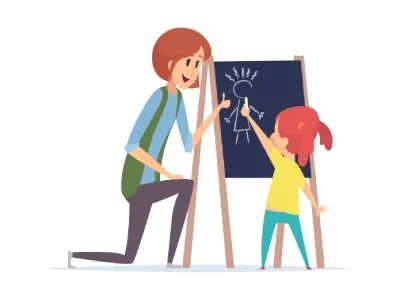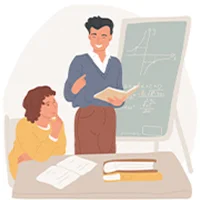Teach part-time/full-time from your Home
Take full charge of your life.

-
Earn Handsomely
By taking remote classes for 4-5 hrs* a day
-
International Exposure
Teach students from across the world
-
Training and support
We provide training and continuous support



Reasons to work with us

End to End Support
Training to understand kids psychology and deliver quality sessions

Flexible Timings
Choose hours giving you a fine work life balance

Life long bonds
Our students love their teachers giving a sense of fulfillment

Rewards and Bonus
Great work will always be recognized with added bonus plans
Our teachers are our strongest partners
My overall experience at Kidway has been fantastic. It has great work environment, where people are not just compensated fairly for their work, but also given many opportunities to grow and learn new things in this field of work.
It’s commendable how they mentor new teachers. It shows their leadership and commitment to support the growth of their colleagues. They have a unique way of using constructive feedback and encouragement to motivate students to strive for excellence.
Kidway doesn’t just bridge the gap in conceptual understanding; it does so with an innovative blend of interactive lessons and personalized learning paths. The platform’s adaptability to individual learning styles sets it apart, ensuring that every child receives the tailored support they need.
I feel blessed to be a part of Kidway as an instructor. This agile place has given me so much knowledge, experience, and of course, good money. My love for kids has only grown stronger and I’m so grateful to this company for making me a part of it.
Kidway is a very gigantic platform for kids. It is one of the best interactive online classes for kids. I love to work in Kidway and I’m very happy to work as an instructor. The management is very good and supportive and I’m looking many more years ahead to work in Kidway ❤️

What do you need to be a Kidway Teacher

Skills Required
- Good Logical and analytical skills.
- Passionate to teach Mathematics in a simple and logical way.
- Ready and flexible to learn new skills
- Proficient English Speaking skills.
- Being patient without ego and becoming a child with the kids.
- Assess students’ performance and progress to ensure they are mastering the skills
- 1-2 years of kids’ teaching experience in Mathematics.
- Proficient English Speaking skills.
- Being friendly, patient without ego and becoming a child with the kids.
- Assess students’ performance and progress to ensure they are mastering the skills.


A. For Maths Teachers
- Good Logical and analytical skills.
- Passionate to teach Mathematics in a simple and logical way.
- Ready and flexible to learn new skills
- Proficient English Speaking skills.
- Being friendly, patient without ego and becoming a child with the kids.
- Assess students’ performance and progress to ensure they are mastering the skills.
- 1-2 years of kids’ teaching experience in Mathematics.
B. Pre-primary/Primary Teachers
- Proficient English Speaking skills.
- Being friendly, patient without ego and becoming a child with the kids.
- Assess students’ performance and progress to ensure they are mastering the skills.

Minimum Requirements
- A laptop/desktop with a web camera.
- Good internet connection to support LIVE classes.
- Headphones/Earphones
- Blackboard/Whiteboard
Minimum Requirements


Perks of being a Kidway Tutor
- Salary at par with the best market trend.
- Opportunity to grow to supervisor level in case of good performance, higher earning potential.
- Exposure to the best curriculum across the globe through the international teaching platform.
- Opportunity to learn best-in-class teaching skills driven by kids’ psychology & unique teaching methods.
- Learn a variety of activities and instructional methods to stimulate children’s abilities.








